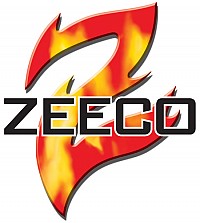Tranter Shell and Plate
Extending Capability Into Even Tougher Duties
Shell & Plate Tranter Heat Exchangers are designed as a performance upgrade over shell & tube, block-type welded and brazed aluminum heat exchangers. These new series of exchangers offer high thermal performance with compact size, similar to that of gasketed plate heat exchangers, with low hold-up volume and low installed weight, especially when filled.
Now in its second generation of refinement, today’s Shell & Plate Tranter Heat Exchangers are the pride of Tranter’s Welded Competence Center in Artern, Germany. Combining field experience with design input from Tranter’s global R&D operations, this test bed of advanced manufacturing processes and equipment has introduced extended-capability refinements. We are now only beginning to explore the shell & plate exchanger’s potential in ever-more-difficult duties. In addition to design improvements, we have added larger plates and extended-thermal-length oblong plates to the product line.
Designed to Distribute Stress
The heart of Shell & Plate Tranter Heat Exchangers is their heat transfer element, also called the plate core, composed of round or oblong chevron-type plates welded into a cassette by a porthole perimeter weld. Cassettes are then placed together, welded to each other using a perimeter weld.
The thermal element subassembly then has metal shell-side flow diverters, nozzles and an end plate welded to it. An exclusive cage structure (see picture), welded only to the end cover, surrounds and supports the plate core pack assembly. The cage prevents any cantilever stresses from being transferred to the plate pack. The result is a pressure vessel of high integrity, with an accordion-like core that is highly tolerant of thermal expansion.
The construction in these Tranter heat exchangers is more robust than in gasketed units, shell & tube exchangers and welded block-type square welded units. There are no gaskets to replace or fail. There are no tubes to vibrate under upset flow conditions and induce stress to welds, baffles and supports, with early failure as a result. The fully welded round or oblong design, involving both plate port and perimeter welds, is an optimal stress-distributing shape; there are no 90° corners and edges subject to stress failures as with block-type plate heat exchangers.
 Welded Product Brochure
Welded Product Brochure 


























